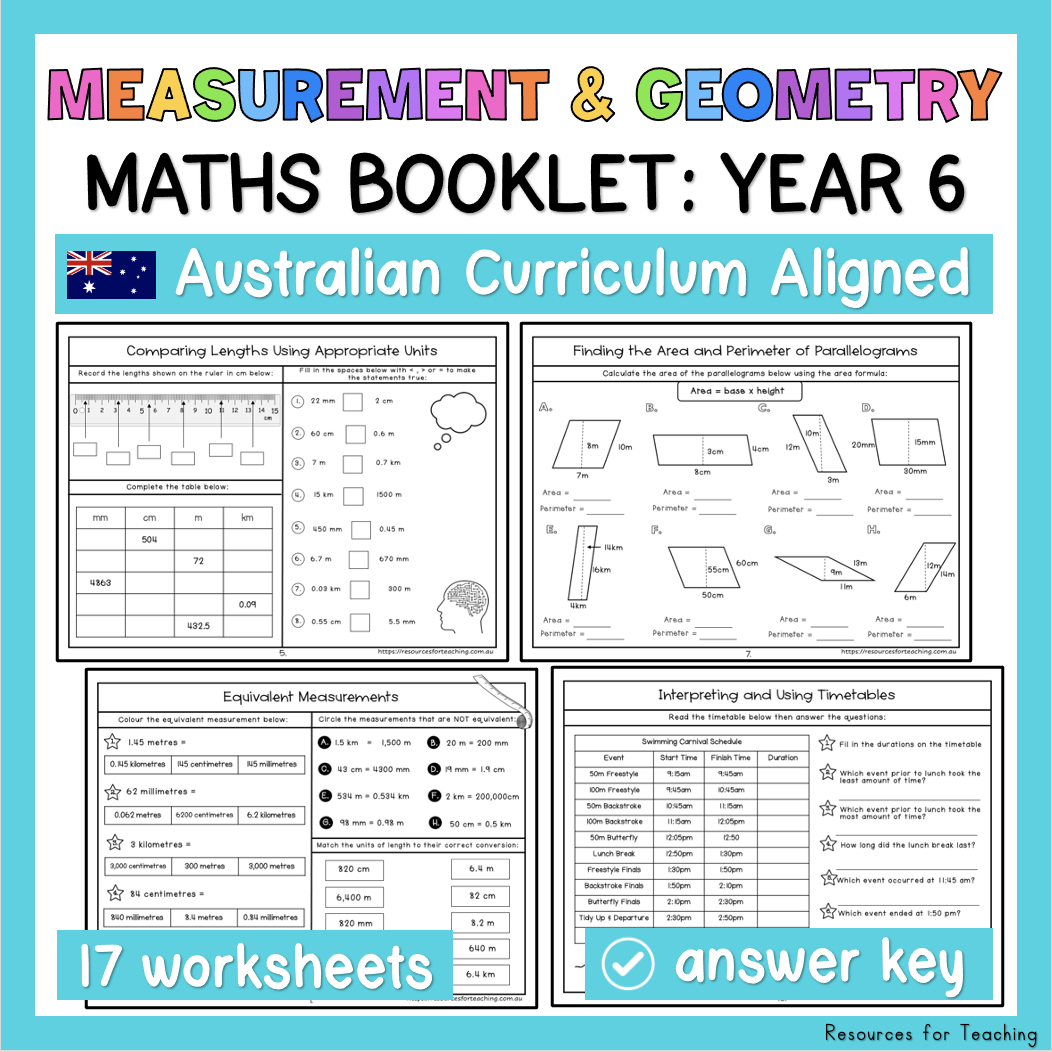Description
The following outcomes are addressed in this pack:
- ACMMG135 – Connect decimal representations to the metric system
- ACMMG136 – Convert between common metric units of length, mass and capacity
- ACMMG137 – Solve problems involving the comparison of lengths and areas using appropriate units
- ACMMG138 – Connect volume and capacity and their units of measurement
- ACMMG139 – Interpret and use timetables
- ACMMG140 – Construct simple prisms and pyramids
- ACMMG141 – Investigate, with and without digital technologies, angles on a straight line, angles at a point and vertically opposite angles. Use results to find unknown angles
- ACMMG142 – Investigate combinations of translations, reflections and rotations, with and without the use of digital technologies
- ACMMG143 – Introduce the Cartesian coordinate system using all four quadrants
Page 1: Coversheet page with illustrations and spot to write name
Page 2: Equivalent Measurements
Page 3: Converting Between Common Metric Units: Length
Page 4: Converting Between Common Metric Units: Mass
Page 5: Converting Between Common Metric Units: Capacity
Page 6: Comparing Lengths Using Appropriate Units
Page 7: Comparing Areas Using Appropriate Units
Page 8: Finding the Area and Perimeter of Parallelograms
Page 9: Finding the Area and Perimeter of Triangles
Page 10: Units of Measurement: Volume
Page 11: Interpreting and Using Timetables
Page 12: Developing a Timetable
Page 13: Nets and Skeletal Models of Prisms and Pyramids
Page 14: Describing and Performing Translations
Page 15: Reflecting 2D Shapes
Page 16: Rotating 2D Shapes
Page 17: Location Using the Cartesian Coordinate System
Page 18: Angles (acute, obtuse, right, straight, right)
















